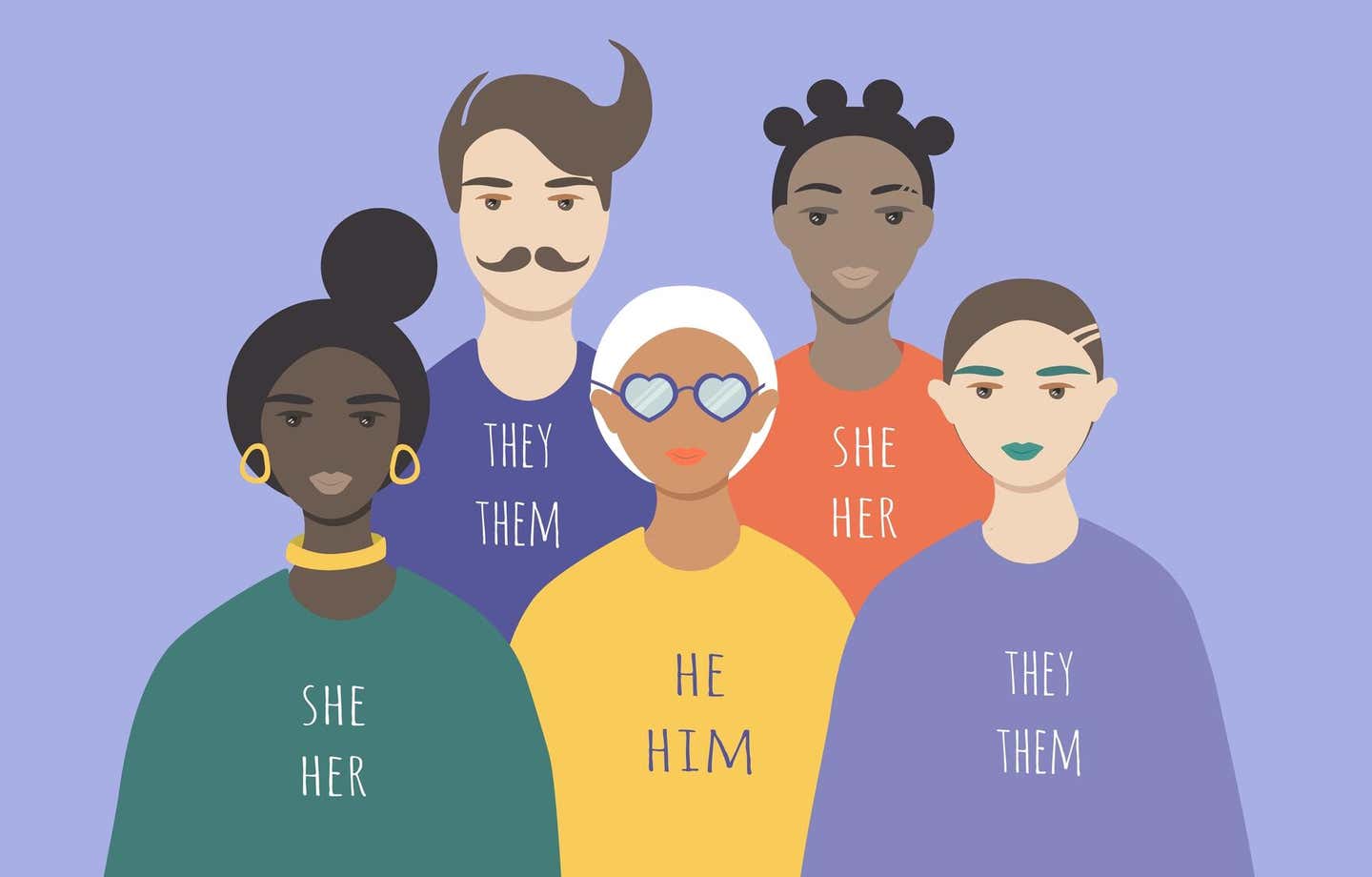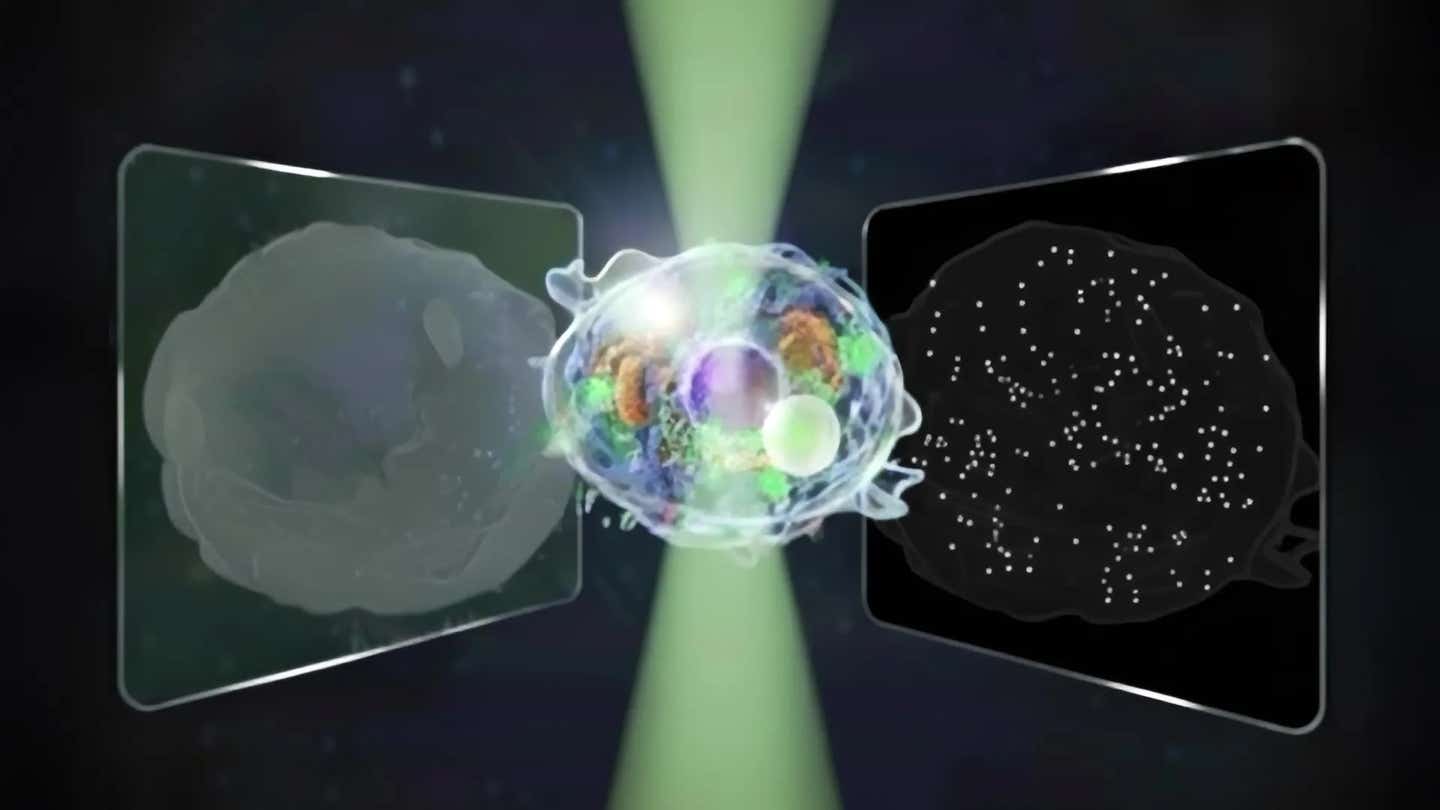From asexual to Ze-zir: Making sense of sexual orientations and pronouns
Attraction isn’t one-size-fits-all. While some people feel drawn to one gender, others may connect emotionally or romantically with more than one—or with none at all.

For a long time, the world looked at orientation in two categories—straight or gay. But those old ideas don’t cover the full picture. (CREDIT: Shutterstock)
Over time, people have become more open to different sexual orientations and the wide range of identities they include. These changes have sparked deeper conversations about gender and attraction, helping society grow in both understanding and empathy. It’s now more important than ever to listen, learn, and show respect for everyone’s identity.
Attraction isn’t one-size-fits-all. While some people feel drawn to one gender, others may connect emotionally or romantically with more than one—or with none at all. That’s the heart of sexual orientation: who someone feels close to, desires, or loves, whether emotionally, romantically, or sexually.
For a long time, the world looked at orientation in two categories—straight or gay. But those old ideas don’t cover the full picture. Today, people recognize that attraction can be fluid, and many identities don’t fit into neat boxes. Some terms speak to specific feelings or experiences, and others reflect broader, more flexible ways of being.
This guide walks through different orientations and the language people use to express them, including pronouns and key traits. It highlights that there’s no single “right” way to be. Every person’s experience is valid—and worth honoring.
The following list of sexual orientations is by no means exhaustive but provides a strong starting point to fuel better understanding. For a more comprehensive glossary of terms check out Love Has No Label's glossary of terms.
Heterosexuality
Heterosexuality is perhaps the most widely recognized sexual orientation, where individuals experience attraction primarily to members of the opposite gender. This orientation is commonly referred to as "straight." The associated pronouns typically align with traditional gender norms, such as "he/him" for males and "she/her" for females.
The term "heterosexuality" first appeared in print in 1868 (in German) from writer Karl-Maria Kertbeny, a Hungarian-German writer and human rights advocate. He used "heterosexual" (from Greek hetero- meaning "different" + Latin sexus for "sex") in private writings while advocating for the decriminalization of homosexuality.
The term was first used publicly in 1892, in a German pamphlet by psychiatrist Richard von Krafft-Ebing in his influential work Psychopathia Sexualis. Krafft-Ebing used both "heterosexuality" and "homosexuality" to classify sexual behaviors.
The modern definition, as a normative attraction between men and women, developed gradually during the 20th century, particularly in the 1920s and 1930s. The term became more common as medical, psychological, and later social discourses increasingly categorized sexual orientation.
Related Stories
Homosexuality
Homosexuality refers to attraction primarily to members of the same gender. Gay (for men) and lesbian (for women) are commonly used terms to describe individuals who identify as homosexual. Pronouns for individuals identifying as gay or lesbian typically align with their gender identity, similar to those of heterosexual individuals.
The term "homosexuality" was also coined around 1868–69, by Karl-Maria Kertbeny. He introduced the word in a private pamphlet written in German, where he used the term Homosexualität to argue against anti-sodomy laws, particularly Paragraph 175 in Germany, which criminalized male same-sex relations. The term combined the Greek word homo (meaning "same") and the Latin sexualis (relating to sex), reflecting a growing interest in scientific and psychological classification of sexual behavior.
Initially the term was used in medical and psychiatric discourse to describe same-sex attraction as a type of pathology or deviation from what was considered normal. It appeared alongside terms like “heterosexual,” “bisexual,” and “sexual inversion” as scholars tried to categorize sexual behavior in the late 19th and early 20th centuries.
The term "homosexuality" began appearing in English texts around the 1890s, often in translations of German or French scientific works. One of the early appearances was in translations of writings by Richard von Krafft-Ebing, a German psychiatrist whose 1886 book Psychopathia Sexualis included the term.
Over time, especially in the 20th century, “homosexuality” moved from medical texts into broader public and legal discourse. It was used in psychology (e.g., by Sigmund Freud), legal arguments, and eventually civil rights movements. By the late 20th century, the medical model was largely rejected, and many LGBTQ+ advocates began moving away from "homosexual" in favor of more affirming terms like "gay," "lesbian," and "queer."
Transgender
Often abbreviated as "trans." An umbrella term used to describe people whose true gender identity does not “match” the sex or gender they were assigned at birth. People who are transgender express themselves in many ways and do not necessarily need to alter their appearance in any way. When talking to or about someone who identifies as transgender, it is important to be respectful of how they identify and use their self-ascribed identity, name, and pronouns. Pronouns for transgender individuals correspond to their gender identity or may include gender-neutral pronouns like "they/them/their."
The term "transgender" has a complex history, but it began to take its modern shape in the 1960s and 1970s, with broader adoption in the 1990s.
The earliest recorded use of "transgender" (or more precisely "transgenderal") was by psychiatrist John F. Oliven in 1965 in his book Sexual Hygiene and Pathology. He used it to describe people who lived as a gender different from their assigned sex but who didn't necessarily undergo surgery. In the 1970s, the term gained more traction through Virginia Prince, a transgender activist and self-identified "transgenderist," who used it to describe people like herself who lived as women full-time but did not seek gender-affirming surgery.
In the 1990's, "Transgender" entered more widespread use as an umbrella term to include people whose gender identity differs from the sex they were assigned at birth. This includes trans men, trans women, nonbinary people, and others with gender-diverse identities. Activists and academics began promoting the term to replace more pathologizing terms like “transsexual,” shifting the conversation from medical transition to identity and social experience.
Bisexuality
Bisexuality involves attraction to both genders, though not necessarily to the same degree or simultaneously. Bisexual individuals may experience attractions to people of different genders at different times or in different contexts. The pronouns for bisexual individuals correspond to their gender identity, similar to heterosexual and homosexual individuals.
The word "bisexual" was first used in biology in the mid-19th century to describe organisms that possess both male and female reproductive organs (what we now call hermaphroditic species). "Bisexuality" began appearing in psychological and sexological literature in the late 19th century, notably through the work of early sexologists like Richard von Krafft-Ebing and Sigmund Freud.
Krafft-Ebing, in his 1886 book Psychopathia Sexualis, used "bisexuality" in a biological sense but also hinted at a psychological duality. Freud later used the term to describe a theoretical state of all humans possessing both masculine and feminine traits — a kind of psychic bisexuality, not strictly about sexual attraction.
The definition started to shift toward describing sexual attraction to both men and women, closer to the modern understanding. In the 1940s–1960s, the term "bisexual" began to be used more clearly in its current sense within sex research, especially by Alfred Kinsey, who popularized the idea of sexual orientation existing on a continuum.
In the 1970s LGBTQ+ Rights Movement, "Bisexuality" was firmly embraced as an identity distinct from heterosexuality and homosexuality, especially in activist and feminist circles.
Asexuality
Asexuality is characterized by a lack of sexual attraction or a low or absent interest in sexual activity. Asexual individuals may still experience romantic attraction or form intimate relationships that are non-sexual in nature. Pronouns for asexual individuals align with their gender identity.
The word "asexual" was used in biology as early as the 19th century, referring to organisms that reproduce without sex (e.g., bacteria or plants via budding or splitting). In this biological sense, it comes from the prefix "a-" meaning "not" and "sexual"—so, "not sexual."
In the context of human sexuality, the modern use of "asexual" to describe a lack of sexual attraction to others began to emerge in the 20th century, particularly in the 1970s and 1980s. One early documented use was in the book "The Journal of Sex Research" in 1977, which referenced individuals who did not experience sexual attraction.
The term gained broader recognition with the founding of the Asexual Visibility and Education Network (AVEN) in 2001 by David Jay, a pivotal moment in organizing asexual identity as part of the LGBTQ+ spectrum. AVEN helped define and spread awareness of asexuality as a sexual orientation, describing people who do not experience sexual attraction to others.
Demisexuality
Demisexuality is a term used to describe individuals who only experience sexual attraction after forming a strong emotional bond with someone. Demisexual individuals typically do not feel sexual attraction based solely on physical appearance or initial encounters. Pronouns for demisexual individuals correspond to their gender identity.
The term "demisexuality" originated in 2006 from the Asexual Visibility and Education Network (AVEN) forums, a major online space for asexual community discussion and identity exploration. It was coined to describe a specific experience on the asexual spectrum—where a person does not feel sexual attraction unless they have formed a strong emotional bond with someone first.
This concept helped fill a gap in the language around attraction, especially for people who didn't identify as fully asexual or fully allosexual (experiencing sexual attraction more readily).
AVEN members introduced and popularized the term as part of a growing awareness and articulation of nuanced identities related to asexuality and gray-asexuality (the "gray area" between asexual and sexual). Since its coinage, "demisexuality" has become widely used in both online communities and academic discussions of sexuality and identity.
Greysexuality (or Grey-A)
Greysexuality falls within the asexual spectrum and refers to individuals who occasionally experience sexual attraction but do so infrequently, weakly, or with low intensity. Greysexual individuals may experience fluctuating levels of sexual attraction over time. Pronouns for greysexual individuals align with their gender identity.
The term "greysexuality" (sometimes spelled graysexuality) emerged from online asexual communities in the early to mid-2000s, particularly within forums like the Asexual Visibility and Education Network (AVEN). It provided language and validation for individuals who didn’t feel completely asexual but also didn’t identify with the typical experience of frequent or consistent sexual attraction.
Polysexuality
Polysexuality involves attraction to multiple, but not necessarily all, genders. Polysexual individuals may experience attraction to individuals of various gender identities, excluding others. Pronouns for pansexual individuals correspond to their gender identity or may include gender-neutral pronouns like "they/them/their."
The term polysexuality emerged in the late 20th century, as part of a broader evolution in LGBTQ+ language and identity. It gained traction alongside other non-monosexual identities like bisexuality and pansexuality, especially within queer and academic communities exploring the complexity of sexual orientation beyond the gay/straight binary. It was coined to help individuals distinguish their orientation from bisexuality (typically “two genders”) and pansexuality (often defined as “attraction to all genders or regardless of gender”).
It likely developed through online forums, zines, and LGBTQ+ spaces that encouraged more nuanced discussions of identity. The term gained more visibility in the 2000s, particularly on Tumblr and other social platforms, as part of the growing awareness of sexual fluidity. Unlike terms like “homosexual” or “bisexual,” which were used in clinical or legal contexts much earlier (19th century), “polysexuality” emerged more organically from community-driven identity work rather than medical discourse.
Pansexuality
Pansexuality transcends traditional gender binaries and encompasses attraction to individuals regardless of their gender identity or expression. Pansexual individuals may be attracted to people of any gender identity, including male, female, transgender, non-binary, and others. Pronouns for pansexual individuals correspond to their gender identity or may include gender-neutral pronouns like "they/them/their."
The term "pansexuality" comes from the Greek prefix “pan-”, meaning “all”, and it began to emerge in its current sexual orientation context in the early to mid-20th century, though it gained broader cultural visibility much later.
The term "pansexual" was first used between 1920 and 1940 in a Freudian psychoanalytic context. Freud described pansexualism as the idea that all human behavior is driven by sexual instinct. In this early context, “pansexual” didn’t mean being attracted to all genders, but rather that sex was central to all human motivation.
In the late 20th century, activists and scholars in LGBTQ+ communities began to reclaim and repurpose the term “pansexual” to describe sexual or romantic attraction regardless of gender. It was intended to challenge binary thinking about gender and to signal attraction to people who are cisgender, transgender, nonbinary, and beyond.
Pansexuality became more visible in the 2000s and 2010s, particularly through online communities, media representation, and LGBTQ+ advocacy. Celebrities like Miley Cyrus, Janelle Monáe, and Brendon Urie publicly identifying as pansexual helped boost mainstream awareness.
Polysexual vs. Pansexual:
While the prefix “poly-” means “many,” the prefix “pan-” means “all.” Being attracted to many genders doesn’t necessarily mean you’re attracted to all genders. For example, you might be attracted to women and men, but not nonbinary people. You might be attracted to women and nonbinary people, but not men. So, while pansexual people technically fall under the umbrella of polysexual — because they are indeed attracted to people of multiple genders — not all polysexual people are pansexual.
Omnisexuality:
The word omnisexual is similar to pansexual. The prefix “omni-” refers to the fact that omnisexual people are attracted to people of all genders. Some people prefer the word “pansexual” over the word “omnisexual” and vice versa, while others refer to themselves using both terms. Someone can identify with omnisexual and polysexual at the same time. Pronouns for omnisexual individuals correspond to their gender identity or may include gender-neutral pronouns like "they/them/their."
Fluidity and Non-Binary Identities
In addition to the orientations outlined above, it's essential to acknowledge the fluidity of sexual orientation and the existence of non-binary identities. Non-binary individuals may identify outside the traditional categories of male or female, and their sexual orientations can vary widely.
Pronouns for non-binary individuals may include gender-neutral pronouns like "they/them/their," as well as pronouns that reflect their specific gender identity. In some cases, Non-binary individuals may choose to use the following pronouns: Ze/hir or zir, Xe/xem, Hy/hym, Co/cos.
As society progresses towards greater inclusivity and acceptance, it's crucial to recognize and affirm the diverse range of sexual orientations and gender identities. By understanding the nuances of each orientation and respecting individuals' chosen pronouns, we can create a more inclusive and affirming environment for all members of the community.
Embracing diversity and celebrating the richness of human experience is essential in fostering a society where everyone feels valued and accepted for who they are.
Note: The article above provided above by The Brighter Side of News.
Like these kind of feel good stories? Get The Brighter Side of News' newsletter.



